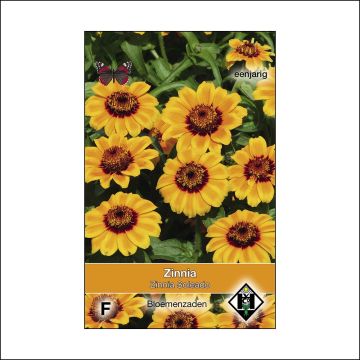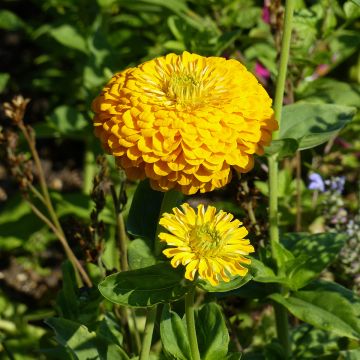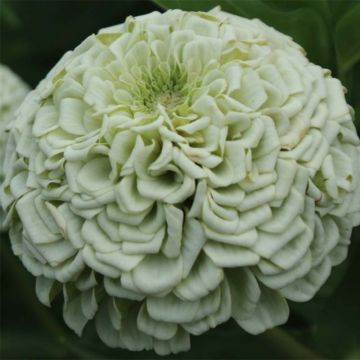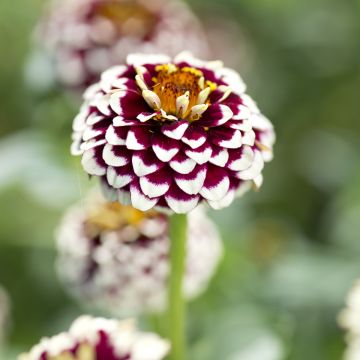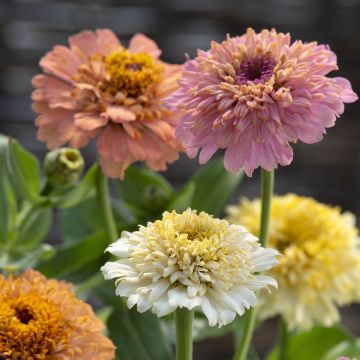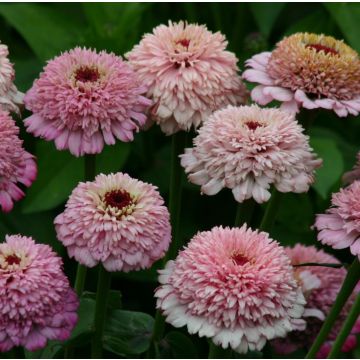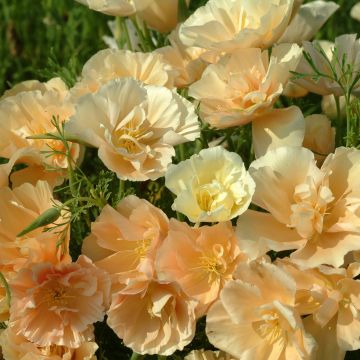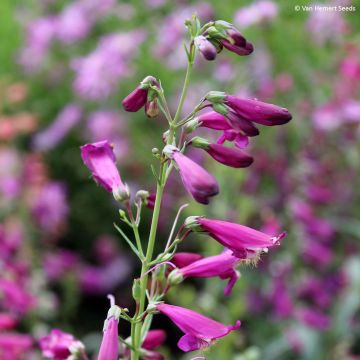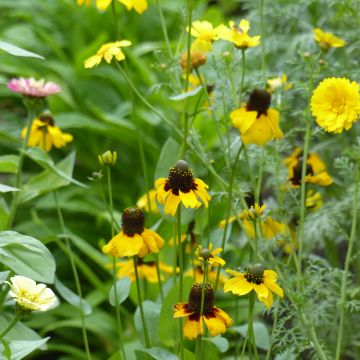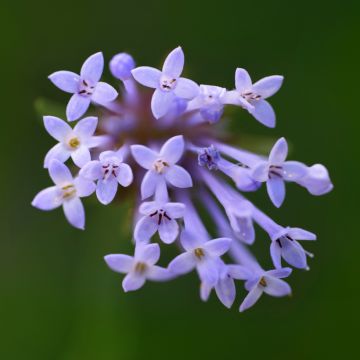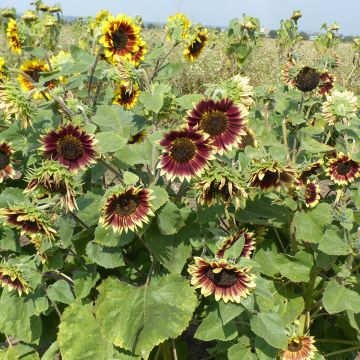

Zinnia hybrida Profusion Mixed
Zinnia hybrida Profusion Mixed
Zinnia hybrida Profusion Mixed
Zinnia, Hybrid Zinnia
Special offer!
Receive a €20 voucher for any order over €90 (excluding delivery costs, credit notes, and plastic-free options)!
1- Add your favorite plants to your cart.
2- Once you have reached €90, confirm your order (you can even choose the delivery date!).
3- As soon as your order is shipped, you will receive an email containing your voucher code, valid for 3 months (90 days).
Your voucher is unique and can only be used once, for any order with a minimum value of €20, excluding delivery costs.
Can be combined with other current offers, non-divisible and non-refundable.
Home or relay delivery (depending on size and destination)
Schedule delivery date,
and select date in basket
This plant carries a 6 months recovery warranty
More information
We guarantee the quality of our plants for a full growing cycle, and will replace at our expense any plant that fails to recover under normal climatic and planting conditions.
Would this plant suit my garden?
Set up your Plantfit profile →
Description
The 'Profusion Mixed' Zinnias, as their name suggests, are three small but well-branched and particularly floriferous hybrid varieties. Their flowers are brightly coloured, ranging from white, pink, to orange depending on the plants. These small plants, grown as annuals, flower continuously from July until mid-October. Easy to grow, heat-resistant, and floribundant, they are essential flowers in a flowerbed for bees, a flowery meadow, or a garden that welcomes nature.
The approximately 20 species that make up the Zinnia genus originate from dry prairies in an area stretching from southwestern North America to South America, but mostly from Mexico. They are mostly heat-loving annual plants and all belong to the Asteraceae family.
The 'Profusion Mixed' selection won the All America Selections (AAS) for its outstanding performance in the garden. Each plant forms a small, rounded, and well-branched clump in just a few months, occupying an average of 40cm (16in) in all directions. The leaves, velvety and medium green, are narrow and sheathing at the base. The slender stems are often tinged with red near the ground. Their very long summer flowering is nectar-rich and honey-producing. The flowers appear in the axils of the leaves, forming semi-double heads, 4cm (2in) wide, composed of a double row of ligulate petals in pure white, pink, and bright orange, depending on the plants. The centre of the head is occupied by tiny fertile florets in a bright yellow color, darkening as they ripen.
Highly appreciated for their robustness, vibrant colours, and ease of cultivation, Zinnias are a reliable choice in the garden. Versatile, they can be placed in borders, flowerbeds, or even in the vegetable garden, between rows of vegetables. Zinnias thrive in the sun and withstand high temperatures, as long as they are watered a little. They perform best in neutral, rich, and well-drained soil. Although not demanding, they can still grow in average garden soil. They can easily be combined with perennials such as pink Rudbeckias or with other annuals like Coreopsis or Ammi visnaga. They can also be sown in pots to decorate the terrace in summer. This cheerful 'Profusion Mixed' selection goes well with Gaillardias, Nigellas, perennial or annual flax, Californian poppies, snapdragons, and wallflowers, all of which are equally easy to grow in light soil.
Flowering
Foliage
Plant habit
Botanical data
Zinnia
hybrida
Profusion Mixed
Asteraceae
Zinnia, Hybrid Zinnia
Cultivar or hybrid
Other Zinnia seeds
View all →Planting and care
Sow Zinnia seeds directly in place, from April to May, in loose and warm soil. Do not bury the seeds too deeply (3mm) is sufficient) and space them 30cm (12in) apart. Keep the soil moist until germination, which usually takes between 7 and 14 days.
For early flowering, sow from March to April (indoors, at a temperature of 15 to 25°C (59 to 77°F)) in a tray filled with good seed compost, keeping it moist but not waterlogged. When the plants are large enough to handle, transplant them into pots. Gradually acclimatize your Zinnias to cooler conditions for about two weeks before planting them in the garden, once the risk of frost has passed. Space the plants 30cm (12in) apart.
Zinnias thrive in sunny locations and tolerate high temperatures well, as long as they are watered regularly. They perform best in neutral, rich, and well-drained soil. However, they can still grow in average garden soil. They may occasionally be susceptible to powdery mildew, which can be easily avoided by not planting them in confined spaces and avoiding wetting the foliage. Be cautious of slugs that enjoy feeding on their young tender leaves during planting.
Sowing period
Intended location
Planting & care advice
This item has not been reviewed yet - be the first to leave a review about it.
Similar products
Haven't found what you were looking for?
Hardiness is the lowest winter temperature a plant can endure without suffering serious damage or even dying. However, hardiness is affected by location (a sheltered area, such as a patio), protection (winter cover) and soil type (hardiness is improved by well-drained soil).

Photo Sharing Terms & Conditions
In order to encourage gardeners to interact and share their experiences, Promesse de fleurs offers various media enabling content to be uploaded onto its Site - in particular via the ‘Photo sharing’ module.
The User agrees to refrain from:
- Posting any content that is illegal, prejudicial, insulting, racist, inciteful to hatred, revisionist, contrary to public decency, that infringes on privacy or on the privacy rights of third parties, in particular the publicity rights of persons and goods, intellectual property rights, or the right to privacy.
- Submitting content on behalf of a third party;
- Impersonate the identity of a third party and/or publish any personal information about a third party;
In general, the User undertakes to refrain from any unethical behaviour.
All Content (in particular text, comments, files, images, photos, videos, creative works, etc.), which may be subject to property or intellectual property rights, image or other private rights, shall remain the property of the User, subject to the limited rights granted by the terms of the licence granted by Promesse de fleurs as stated below. Users are at liberty to publish or not to publish such Content on the Site, notably via the ‘Photo Sharing’ facility, and accept that this Content shall be made public and freely accessible, notably on the Internet.
Users further acknowledge, undertake to have ,and guarantee that they hold all necessary rights and permissions to publish such material on the Site, in particular with regard to the legislation in force pertaining to any privacy, property, intellectual property, image, or contractual rights, or rights of any other nature. By publishing such Content on the Site, Users acknowledge accepting full liability as publishers of the Content within the meaning of the law, and grant Promesse de fleurs, free of charge, an inclusive, worldwide licence for the said Content for the entire duration of its publication, including all reproduction, representation, up/downloading, displaying, performing, transmission, and storage rights.
Users also grant permission for their name to be linked to the Content and accept that this link may not always be made available.
By engaging in posting material, Users consent to their Content becoming automatically accessible on the Internet, in particular on other sites and/or blogs and/or web pages of the Promesse de fleurs site, including in particular social pages and the Promesse de fleurs catalogue.
Users may secure the removal of entrusted content free of charge by issuing a simple request via our contact form.
The flowering period indicated on our website applies to countries and regions located in USDA zone 8 (France, the United Kingdom, Ireland, the Netherlands, etc.)
It will vary according to where you live:
- In zones 9 to 10 (Italy, Spain, Greece, etc.), flowering will occur about 2 to 4 weeks earlier.
- In zones 6 to 7 (Germany, Poland, Slovenia, and lower mountainous regions), flowering will be delayed by 2 to 3 weeks.
- In zone 5 (Central Europe, Scandinavia), blooming will be delayed by 3 to 5 weeks.
In temperate climates, pruning of spring-flowering shrubs (forsythia, spireas, etc.) should be done just after flowering.
Pruning of summer-flowering shrubs (Indian Lilac, Perovskia, etc.) can be done in winter or spring.
In cold regions as well as with frost-sensitive plants, avoid pruning too early when severe frosts may still occur.
The planting period indicated on our website applies to countries and regions located in USDA zone 8 (France, United Kingdom, Ireland, Netherlands).
It will vary according to where you live:
- In Mediterranean zones (Marseille, Madrid, Milan, etc.), autumn and winter are the best planting periods.
- In continental zones (Strasbourg, Munich, Vienna, etc.), delay planting by 2 to 3 weeks in spring and bring it forward by 2 to 4 weeks in autumn.
- In mountainous regions (the Alps, Pyrenees, Carpathians, etc.), it is best to plant in late spring (May-June) or late summer (August-September).
The harvesting period indicated on our website applies to countries and regions in USDA zone 8 (France, England, Ireland, the Netherlands).
In colder areas (Scandinavia, Poland, Austria...) fruit and vegetable harvests are likely to be delayed by 3-4 weeks.
In warmer areas (Italy, Spain, Greece, etc.), harvesting will probably take place earlier, depending on weather conditions.
The sowing periods indicated on our website apply to countries and regions within USDA Zone 8 (France, UK, Ireland, Netherlands).
In colder areas (Scandinavia, Poland, Austria...), delay any outdoor sowing by 3-4 weeks, or sow under glass.
In warmer climes (Italy, Spain, Greece, etc.), bring outdoor sowing forward by a few weeks.
































